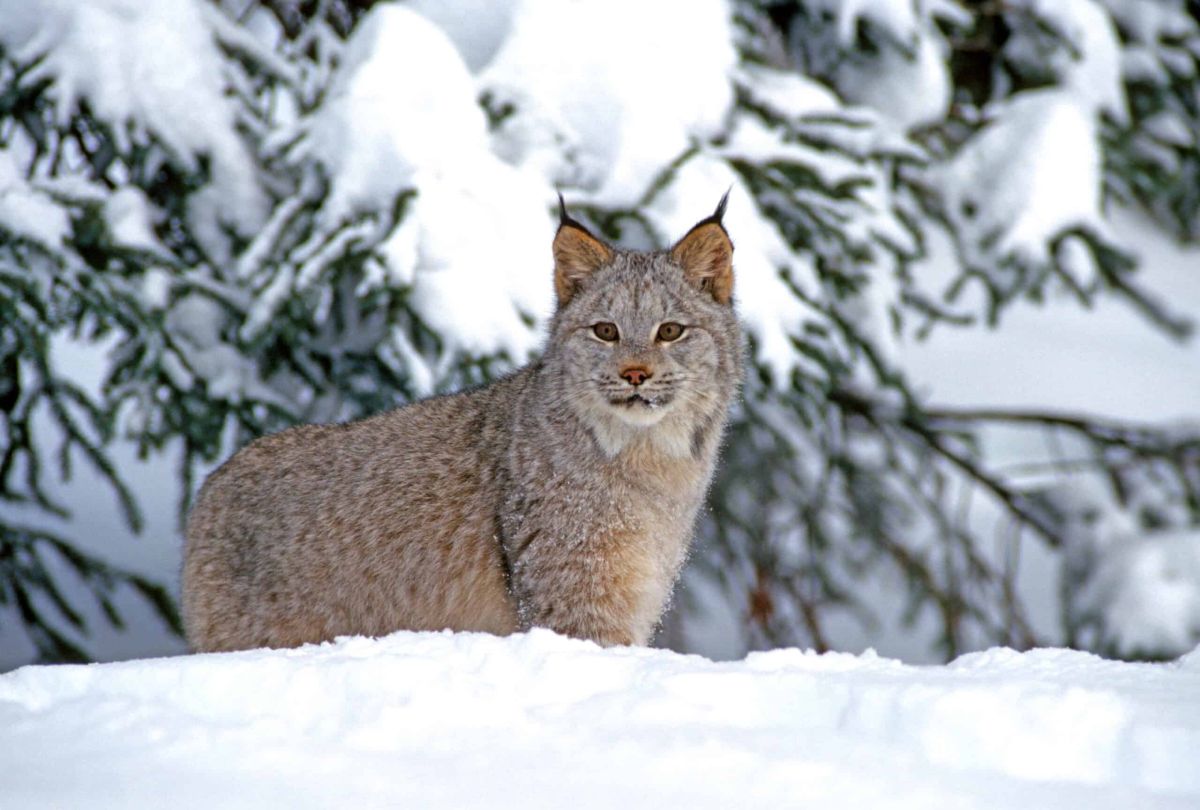The Canadian Lynx: Feline of the Northern Wilds

The Canadian lynx (Lynx canadensis) is an intriguing and elusive member of the cat family, known for its striking appearance and specialized adaptations to cold northern habitats. Found predominantly in the boreal forests of Canada and parts of the northern United States, this feline embodies the rugged beauty and ecological richness of its environment.
Physical Characteristics
The Canadian lynx is a medium-sized cat, measuring about 80 to 110 centimeters (31 to 43 inches) in length, with a tail that typically measures 6 to 10 centimeters (2 to 4 inches). Weighing between 8 to 18 kilograms (18 to 40 pounds), it is slightly larger than its close relative, the bobcat. The lynx’s most distinguishing features are its tufted ears, large paws, and thick fur, which allows it to navigate through deep snow with relative ease. The fur coloration ranges from light grayish-brown to reddish-brown, often with distinctive dark spots, which provide excellent camouflage in their forested environment.
Habitat and Distribution
The Canadian lynx is primarily found in the boreal forests of Canada, particularly in regions characterized by heavy snowfall and dense undergrowth. Its range extends southward into parts of the northern United States, including Minnesota, Montana, and Washington. Lynxes prefer remote areas with abundant snowshoe hare populations, as these hares form the mainstay of their diet. Their large paws act like snowshoes, allowing them to travel efficiently in wintery conditions, while their keen eyesight and acute hearing enable them to hunt in low-light environments.
Diet and Hunting Behavior
The Canadian lynx is a carnivorous predator, with a diet heavily reliant on snowshoe hares. In fact, the relationship between the two species is so intertwined that the lynx’s population cycles often mirror those of the hare. When hare populations are abundant, lynx numbers tend to rise; conversely, when hares are scarce, lynx populations decline. The lynx employs a variety of hunting techniques, including stalking and ambushing its prey. Though primarily hunting alone, they may also exhibit playful behavior while stalking hares, making for an engaging display of feline prowess.
Reproduction and Lifespan
Canadian lynxes typically breed in late winter, with a gestation period of around 60 to 70 days. Females give birth to a litter of 2 to 4 kittens in secluded dens, often lined with fur to provide warmth. The kittens are born blind and helpless, relying completely on their mother for protection and nutrition. They begin to venture out of the den at about 6 weeks old and are fully weaned by 2 months. Young lynxes will remain with their mother for several months before venturing off to establish their territories. In the wild, Canadian lynxes can live around 10 years, though they may live longer in captivity.
Conservation Status
While the Canadian lynx is currently listed as a species of “Least Concern” by the International Union for Conservation of Nature (IUCN), it faces several threats due to habitat loss, climate change, and human encroachment. Logging, urban development, and road construction fragment their habitats and decrease prey availability. Additionally, climate change poses a significant threat, as warmer temperatures disrupt snowshoe hare populations and alter the lynx’s habitat. Conservation efforts, including habitat protection and management, are essential to ensure the long-term survival of this remarkable species.
Conclusion
The Canadian lynx is more than just a striking feline of the northern wilderness; it is an important indicator of the health of boreal forest ecosystems. As climate change and human activities continue to impact their habitat, understanding and protecting the Canadian lynx becomes increasingly important. By preserving its natural environment and promoting sustainable practices, we can ensure that future generations can witness the grace and beauty of this captivating predator in the wild. As stewards of the planet, it is our responsibility to safeguard such unique wildlife, ensuring a rich and diverse ecosystem for all living creatures.



